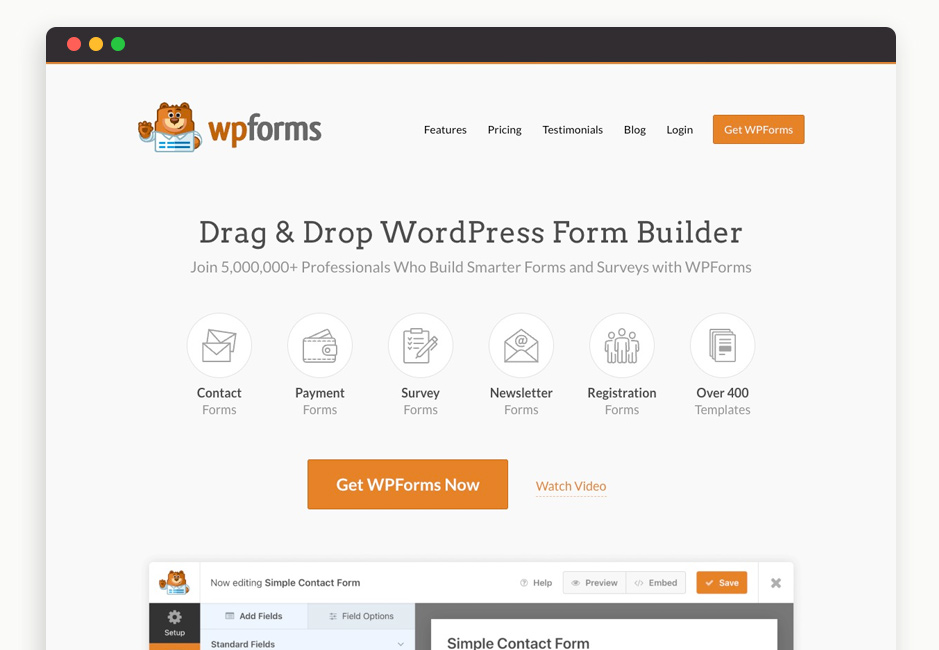I’ve been freelancing for a long time. It became apparent early on that clients enjoyed the convenience and novelty of including interactive forms on their websites. Back in the day, one of the only plugins around was Contact Form 7. Look, with limited competition in the marketplace, it got the job done. Nothing but respect for the pioneers that paved the way. Soon enough, other alternatives like NinjaForms and Gravity Forms began to sprout up. To be clear, I’m only talking about native WordPress plugins—not embeddable third-party solutions like Wufoo. With every new website project, I would try to sample another form builder. Sure, they all had their own strengths, but I was desperately seeking one I could commit to for life.
It wasn’t until a few years ago I finally gave WPForms a shot (I was already a huge fan of their SMTP tools). You know that feeling when you believe you may have stumbled upon the perfect solution but you’re cautiously waiting for something to disappoint? Never happened with WPForms! Every single area in which the others came up short, WPForms excelled. Not only have I not used any other plugin since, but I went back and switched out the form plugins on my past projects as well.
The drag & drop interface of WPForms is super intuitive—making it a breeze to create simple or complex online forms. Each field has its own set of configuration options and CSS settings. Sometimes, all you need is a basic email subscription or contact form. Recently, however, I was tasked with building a massive ordering system for a custom packaging company that included multi-stage structure, conditional logic, image selectors, file upload fields, CRM integration, and payment capabilities. My trusty plugin rose to the occasion and wow’d the client’s pants off!
One feature that really stands out to me is the responsiveness. This is where other form plugins fell on their face. WPForms just does it WAY better. No weird spacing or alignment issues on tablet or mobile devices. All fields are beautifully stacked, edge-to-edge.
This brings me to another quality I appreciate about WPForms: minimal native styles. When I used Gravity Forms, for instance, I felt like I spent half my time undoing the baked-in styles out of the box. WPForms looks pretty if you leave it as-is, but it’s also wicked easy to customize via CSS if you choose. You aren’t battling against the plugin’s default code.
Finally, I have to praise WPForms for its extendability. If you opt for even the most basic paid plan, a ton of cool features open up like conditional logic and entry management. Should you upgrade to higher tiers, every integration under the sun becomes available. Personally, I use the Elite tier because it includes unlimited sites and I simply bundle that as part of my hosting package to clients. Make no mistake, the free Lite version is impressive too and will get the job done for many of your projects. You don’t need to spend money to have awesome online forms.

